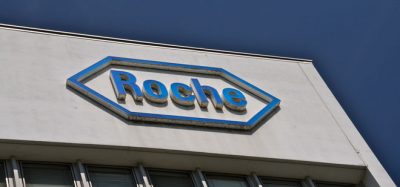Ten years of siRNA – a clinical overview
Posted: 10 July 2012 |
In 2001, small interfering RNA (siRNA) was discovered as the mediator of RNA interference (RNAi), a transient and specific repression mechanism of protein expression1. After the pharmaceutical industry became aware of the intrinsic versatility and potential of this molecule, a race to develop the first siRNA based drug began. However, the initial hype was followed by the realisation that due to the specific properties of this very fragile molecule, stability and delivery issues might limit its application to certain niche indications.
siRNAs have been rushed into the clinics before fully understanding their biological effects. As a result, some of the big pharmaceutical companies such as Roche or Pfizer, who were initially committed to siRNA drug development, have meanwhile scaled back their efforts or entirely stopped their siRNA programs.
An important property of siRNA to be controlled during the drug discovery process is its potential off-target effect, which limits its specificity. The key to developing a successful drug based on a well characterised siRNA molecule is its formulation, since the molecule is relatively big, heavily charged and susceptible to degradation in the body fluids, therefore, the delivery vehicle has to provide protection as well as enable cell penetration and release. An overview of the delivery-enabling excipients which have progressed into clinics can be found elsewhere2. Although so far no siRNA based therapeutic product has been commercialised, several clinical trials have been conducted or are currently on-going.


In 2001, small interfering RNA (siRNA) was discovered as the mediator of RNA interference (RNAi), a transient and specific repression mechanism of protein expression1. After the pharmaceutical industry became aware of the intrinsic versatility and potential of this molecule, a race to develop the first siRNA based drug began. However, the initial hype was followed by the realisation that due to the specific properties of this very fragile molecule, stability and delivery issues might limit its application to certain niche indications.
siRNAs have been rushed into the clinics before fully understanding their biological effects. As a result, some of the big pharmaceutical companies such as Roche or Pfizer, who were initially committed to siRNA drug development, have meanwhile scaled back their efforts or entirely stopped their siRNA programs.
An important property of siRNA to be controlled during the drug discovery process is its potential off-target effect, which limits its specificity. The key to developing a successful drug based on a well characterised siRNA molecule is its formulation, since the molecule is relatively big, heavily charged and susceptible to degradation in the body fluids, therefore, the delivery vehicle has to provide protection as well as enable cell penetration and release. An overview of the delivery-enabling excipients which have progressed into clinics can be found elsewhere2. Although so far no siRNA based therapeutic product has been commercialised, several clinical trials have been conducted or are currently on-going.
Using naked siRNA as a drug product is limited to certain indications, administration routes and target organs, such as the eye, lung or kidney. The first clinical trial using siRNA as a drug substance began in 2004 by Allergan and Sirna Therapeutics. siRNA-027 (AGN211745) was tested to treat subfoveal choroidal neovascular – isation (CNV) secondary to AMD, using single 0.1 – 1.6 milligram intravitreal injections3. No doselimiting effects were observed, while visual acuity and foveal thickness stabilised or improved. A follow-up Phase II study initiated in 2007 investigating three injections from 0.1 – 1 milligram siRNA was terminated early in 2009 due to a company decision unrelated to safety.
Another example of intravitreal admini – stered siRNA is Opko Health’s unmodified siRNA bevasiranib (Cand5, anti-VEGF). A Phase II trial initiated in 2006 tested 0.2 – 3 milligrams of siRNA per eye for the treatment of diabetic macular oedema4,5. However, unspecific immune stimulation led to the termination of further development.
Quark Pharmaceuticals’ REDD14NP (PF04523655/PF-655/RTP801i) has also been developed for the treatment of diabetic macular oedema (DME) and AMD. A Phase I trial concluded in 2010 tested single intravitreal injections of up to three milligrams in choroidal neovascularisation (CNV)/AMD patients. The drug was well tolerated, leading to a Phase II trial in 2009 with up to three milligrams intravitreal weekly or biweekly for several weeks to test its efficacy versus Lucentis for the treatment of DME. This study was also terminated, since the siRNA therapy showed no improvement to the current standard of care. A new study starting in 2012 will test the drug in combination with ranibizumab. In 2010, Quark started to test the safety of another siRNA targeting the pro-apoptotic protein Caspase (2QPI-1007) in a Phase I dose escalating study by single intravitreal injections at various doses for the treatment of optic atrophy and non-arteritic anterior ischemic optic neuropathy (NAION).
Another target organ which Quark has its sights on is the kidney. QPI-1002 (I5NP) targeting the pro-apoptotic p53 to treat acute kidney injury has been tested in a Phase I dose escalating study using single i.v. injections. However, the study was terminated in 2010 due to the lack of patients with a high risk of acute kidney injury (AKI) undergoing cardiovascular surgery. A Phase I/II study initiated in 2008 is testing the drug as prophylaxis of delayed graft function in kidney transplantation by using single i.v. injections up to 10 milligrams per kilogram.
Another ophthalmic application for siRNA is the topical administration via eye drops. Sylentis tested the local and systemic tolerance of SYL040012 in healthy volunteers in a Phase I trial (09/09-06/10) against ocular hypertension and glaucoma. The target is the beta2 adren – ergic receptor (ADRB2). Phase I/II started in 2011 with glaucoma and ocular hypertension patients. Also the siRNA SYL1001 is currently being tested as eye drops in Phase I to treat ocular pain and dry eye.
Another administration route for siRNA under investigation is via the respiratory tract. An siRNA against respiratory syncytial virus (ALN-RSV01) is the most advanced program from Alnylam Pharmaceuticals. It has been demonstrated to be safe and well tolerated in a Phase II trial (completed in 2007) administrated intranasal once daily for up to five days to healthy volunteers who were experimentally infected with RSV. It showed minimal systemic exposure and an antiviral effect6. In another Phase II trial completed in 2009, Cubist and Kyowa Hakko Kirin tested the drug in lung transplant patients infected with RSV. After 0.6 milligrams per kilogram were administered aerolised daily for three days, the symptoms decreased significantly7. A Phase IIb trial initiated in 2010 tests aerolised ALN-RSV01 once daily for five days.
Another example of siRNA administration is the use of siRNA in an ex-vivo setting such as in the study of anti-HIV siRNA in AIDS-related lymphoma patients8. This study, conducted in the City of Hope Cancer Center, shows signs of efficacy in all four patients without adverse events. The hematopoietic cells of the patients are re-implanted after genetic modification in vitro in order to express interfering RNA. Similarly, in a Phase I study initiated in January 2008 at Duke University, monocytes derived from melanoma patients are transfected ex-vivo with siRNA along with antigen-encoding RNA and re-injected after differentiation into dendritic cells intradermal into the melanoma9.
If the organ to be targeted is not accessible in a non-invasive manner, siRNA could also be released locally via implants. Silenseed Ltd. is testing the siRNA siG12D against pancreatic cancer using a local drug eluter (LODER) in a Phase I study initiated in 2011.
Efforts have also been made to test the direct injection of siRNA into the target tissue. In a Phase Ib trial by the Pachyonychia Congenita Project in 2008, a single patient received an intradermal injection of TD101 into the callus of the foot, leading to the expected clinical effect. However, the intense administration pain limits further applicability10.
For systemic administrations aiming at longer half-life in circulation, more advanced nano-sized delivery vehicles, encapsulating and protecting siRNA, are required. The lipid nanoparticle (LNP) or Stable Nucleic-Acid Lipid Particle (SNALP) technology11 is a lipid-based siRNA formulation platform with its original IP currently under dispute between Alnylam and Tekmira. The size of this delivery vehicle utilises the potential to passively target its payload in liver or tumours. In 2010, Tekmira terminated their Phase I study due to potential immune stimulation in one patient after a single i.v. dose of PRO-040201 (TKM-ApoB-001) for the treatment of hypercholesterolemia. In another PhI study initiated in 2010, TKM-PLK1 (TKM- 080301) targeting polo-like kinase is being tested as therapy against cancer. Yet another Phase I study in the National Cancer Institute is testing hepatic intra-arterial administration of TKM-080301 for the treatment of liver tumors.
ALN-VSP02 for treating cancer has been tested in a Phase I trial which concluded in 2011 for up to 1.5 milligrams per kilogram i.v., with 42 per cent of the previously heavily treated patients achieving disease control (stable or better). Responsive patients are being treated in a second Phase I study started in 2010 to collect long-term safety data. ALN-TTR01 is a Transthyretin siRNA formulation treating TTR-mediated amyloidosis (ATTR). Preliminary Phase I data demonstrated its safety and efficacy after a single i.v. dose up to one milligram per kilogram in ATTR patients led to an average 41 per cent reduction of plasma TTR levels with a maximal repression at day seven and a duration of 24 days.
ALN-PCS is a PCSK9-siRNA silencing proprotein convertase subtilisin/kexin type 9 (PCSK9) for the treatment of hyper – cholesterolemia. Phase I was initiated in September 2011 in UK, infusing up to 0.25 milligrams per kilogram in healthy volunteers. Preliminary results demonstrate statistically significant RNAi silencing of PCSK9 of up to 66 per cent and over 50 per cent reduction in LDL-C levels (‘bad’ cholesterol). These results show that despite drawbacks in other programs, siRNA still has blockbuster potential, since cardiovascular diseases are steadily increasing in the western population and the liver is a relatively easy to target organ for nanoparticles.
Furthermore, the delivery vehicles from Silence Therapeutics are based on lipoplexes containing cationic lipids and siRNA. Atu027 for the treatment of cancer was demonstrated to be safe and well tolerated in a dose escalating Phase I clinical trial started in 200912. Preliminary data indicated disease stabilisation and regression in several patients.
Calando Pharmaceuticals is also developing innovative siRNA based formulations for the treatment of cancer. A stabilised nanoparticle (CALAA-01) based on a cyclodextrin containing polymer actively delivers siRNA to solid tumours via the targeting ligand transferrin. In a Phase I trial started in 2008, preliminary results demonstrated the specific gene inhibition by RNAi13.
These examples demonstrate the potential as well as the limits of the applicability of siRNA based therapies. The medical need as well as the acceptance of administration route for the patients will determine whether siRNA provides the solution to unresolved therapeutic challenges. As oral administration is very unlikely to lead to a significant systemic bioavailability for this large, acid- and enzymesensitive molecule, chronic treatment would rely on an alternative, potentially deviceenabled administration which is costly and yet to be developed. Therefore, siRNA will likely only play a role in specific indications which are not yet addressed adequately with the current treatment options.
Acknowledgement
I would like to thank Amy Krois-Lindner for proofreading the manuscript.
References
1. Elbashir,S.M., Harborth,J., Lendeckel,W., Yalcin,A., Weber,K., Tuschl,T., 2001. Duplexes of 21-nucleotide RNAs mediate RNA interference in cultured mammalian cells. Nature 411, 494-498
2. Bruno,K., 2011. Using drug-excipient interactions for siRNA delivery. Advanced Drug Delivery Reviews 63, 1210-1226
3. Kaiser,P.K., Symons,R.C.A., Shah,S.M., Quinlan,E.J., Tabandeh,H., Do,D.V., Reisen,G., Lockridge,J.A., Short,B., Guerciolini,R., Nguyen,Q.D., 2010. RNAi-Based Treatment for Neovascular Age-Related Macular Degeneration by Sirna-027. American Journal of Ophthalmology 150, 33-39
4. Dejneka,N.S., Wan,S.H., Bond,O.S., Kornbrust,D.J., Reich,S.J., 2008. Ocular biodistribution of bevasiranib following a single intravitreal injection to rabbit eyes. Molecular Vision 14, 997-1005
5. Singerman,L., 2009. Combination Therapy Using the Small Interfering Rna Bevasiranib. Retina-the Journal of Retinal and Vitreous Diseases 29, S49-S50
6. DeVincenzo,J., Lambkin-Williams,R., Wilkinson,T., Cehelsky,J., Nochur,S., Walsh,E., Meyers,R., Gollob,J., Vaishnaw,A., 2010. A randomized, double-blind, placebo-controlled study of an RNAi-based therapy directed against respiratory syncytial virus. Proceedings of the National Academy of Sciences of the United States of America 107, 8800-8805
7. Zamora,M.R., Budev,M., Rolfe,M., Gottlieb,J., Humar,A., DeVincenzo,J., Vaishnaw,A., Cehelsky,J., Albert,G., Nochur,S., Gollob,J.A., Glanville,A.R., 2011. RNA Interference Therapy in Lung Transplant Patients Infected with Respiratory Syncytial Virus. American Journal of Respiratory and Critical Care Medicine 183, 531-538
8. DiGiusto,D.L., Krishnan,A., Li,L.J., Li,H.T., Li,S., Rao,A., Mi,S., Yam,P., Stinson,S., Kalos,M., Alvarnas,J., Lacey,S.F., Yee,J.K., Li,M.J., Couture,L., Hsu,D., Forman,S.J., Rossi,J.J., Zaia,J.A., 2010. RNA-Based Gene Therapy for HIV With Lentiviral Vector-Modified CD34(+) Cells in Patients Undergoing Transplantation for AIDS-Related Lymphoma. Science Translational Medicine 2
9. Dannull,J., Lesher,D.T., Holzknecht,R., Qi,W.N., Hanna,G., Seigler,H., Tyler,D.S., Pruitt,S.K., 2007. Immunoproteasome down-modulation enhances the ability of dendritic cells to stimulate antitumor immunity. Blood 110, 4341-4350
10. Leachman,S.A., Hickerson,R.P., Schwartz,M.E., Bullough,E.E., Hutcherson,S.L., Boucher,K.M., Hansen,C.D., Eliason,M.J., Srivatsa,G.S., Kornbrust,D.J., Smith,F.J.D., Mclean,W.H.I., Milstone,L.M., Kaspar,R.L., 2010. First-in-human Mutation-targeted siRNA Phase Ib Trial of an Inherited Skin Disorder. Molecular Therapy 18, 442-446
11. Semple,S.C., Akinc,A., Chen,J.X., Sandhu,A.P., Mui,B.L., Cho,C.K., Sah,D.W.Y., Stebbing,D., Crosley,E.J., Yaworski,E., Hafez,I.M., Dorkin,J.R., Qin,J., Lam,K., Rajeev,K.G., Wong,K.F., Jeffs,L.B., Nechev,L., Eisenhardt,M.L., Jayaraman,M., Kazem,M., Maier,M.A., Srinivasulu,M., Weinstein,M.J., Chen,Q.M., Alvarez,R., Barros,S.A., De,S., Klimuk,S.K., Borland,T., Kosovrasti,V., Cantley,W.L., Tam,Y.K., Manoharan,M., Ciufolini,M.A., Tracy,M.A., de Fougerolles,A., MacLachlan,I., Cullis,P.R., Madden,T.D., Hope,M.J., 2010. Rational design of cationic lipids for siRNA delivery. Nature Biotechnology 28, 172-U18
12. Santel,A., Aleku,M., Roder,N., Mopert,K., Durieux,B., Janke,O., Keil,O., Endruschat,J., Dames,S., Lange,C., Eisermann,M., Loffler,K., Fechtner,M., Fisch,G., Vank,C., Schaeper,U., Giese,K., Kaufmann,J., 2010. Atu027 Prevents Pulmonary Metastasis in Experimental and Spontaneous Mouse Metastasis Models. Clinical Cancer Research 16, 5469-5480
13. Davis,M.E., Zuckerman,J.E., Choi,C.H.J., Seligson,D., Tolcher,A., Alabi,C.A., Yen,Y., Heidel,J.D., Ribas,A., 2010. Evidence of RNAi in humans from systemically administered siRNA via targeted nanoparticles. Nature 464, 1067-U140
About the author
Katharina Bruno gained her PhD in Biotechnology at the University of Natural Resources and Applied Life Sciences in Vienna in 2006 in collaboration with Baxter BioScience. After a postdoctoral fellowship at the University of Chicago in the area of targeted siRNA delivery, she joined Novartis Pharma AG as Principal Scientist in 2008 in Technical Research and Development, focusing on the formulation of siRNA and active targeting of drug substances.









